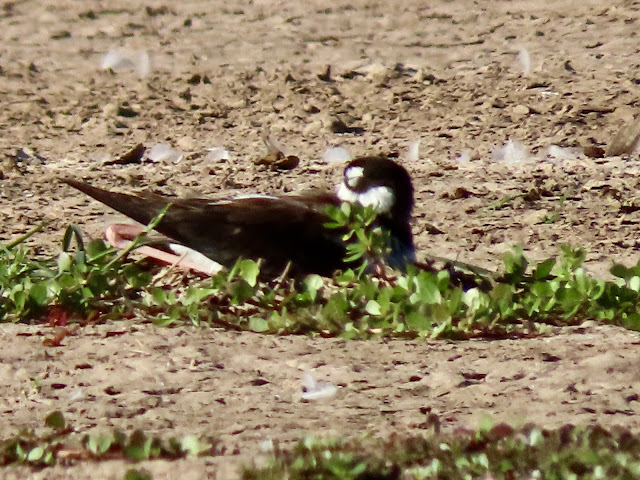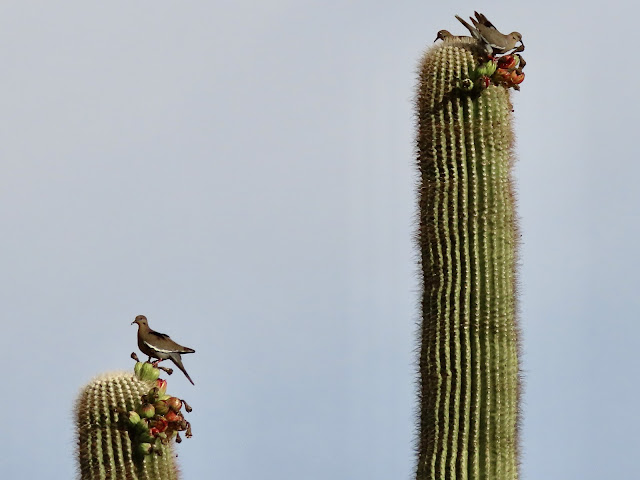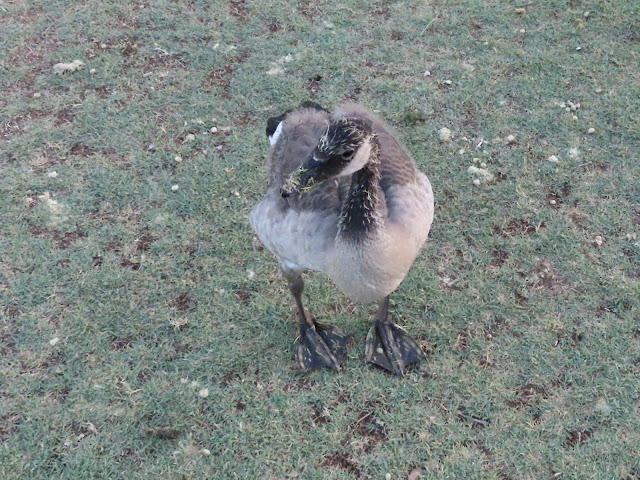For local summer birding, I’ve vowed to stay home if the early morning temperature is 90°F or higher. So, in the past several days, with somewhat cloudy skies, I was additionally motivated on 6/18, being my Mother’s birthdate, and 6/21 being the first day of summer. My Mom loved to walk. She did it on Rockville, Maryland’s city streets, but would have loved the Water Ranch’s wide dirt trails. The first day of summer is always worth celebrating but I must admit the seasons in the Sonoran Desert are quite skewed compared to most of the country with its four identifiable seasons. It is not our growing season; it is our shrinking season…unless we have a wet monsoon. Some monsoons are all bluster that bring Haboobs with incredibly large waves of dust and dirt. In summer months, light rainfall often evaporates prior to hitting the ground. But a good monsoon is worth celebrating and we’re moving into that period of potential wetness.
Taking advantage of the cloudy sky, I set out early enough to begin birding around 5:30 at the Riparian Preserve at Gilbert’s Water Ranch. Consisting of well-planned 110 acres of streams, marshes, upland, and seven recharge basins of water managed by the City’s water treatment facility, it is a great place to visit. Walkers (with and without dogs), runners, and cyclists are among photographers and bird watchers who frequent the place.
With many waterfowl already having departed for their breeding grounds farther north, many of the ponds are allowed to dry up with just enough water to support the birds that stay for the summer, providing some open water and a lot of open mudflats. The shallow waters are helpful for some of the wading birds that breed right there.
Some of the white fluff on the ground is from cottonwood trees; some may be white downy feathers.
BLACK-NECKED STILT have had good reproductive success. Photos below.
 These Black-necked Stilt above are Immatures, smaller and not yet with the pink legs of the adult, as shown in photo above this one.
These Black-necked Stilt above are Immatures, smaller and not yet with the pink legs of the adult, as shown in photo above this one. Always surprising me, four AMERICAN WHITE PELICAN chose to swim and forage in Pond 7 on 6/18.
Juvenile GREAT BLUE HERON, still lacking the full orange bill and white face of the adult. SNOWY EGRET, agitated about another bird, perhaps being too close to its feeding grounds.
On 6/21, I discovered Lindsay Story checking out the bridge at the fishing pond when I arrived. She saw the Least Bittern fly in. I have a hard time finding birds in the marsh reeds and missed it. We continued birding together until I eventually left after almost two hours.
Until next time, hope to see some of you other birders out and about in the early a.m.
As always, my eBird reports can be seen by clicking the links below.
View this checklist online at https://ebird.org/checklist/S113181460
View this checklist online at https://ebird.org/checklist/S113455862





















